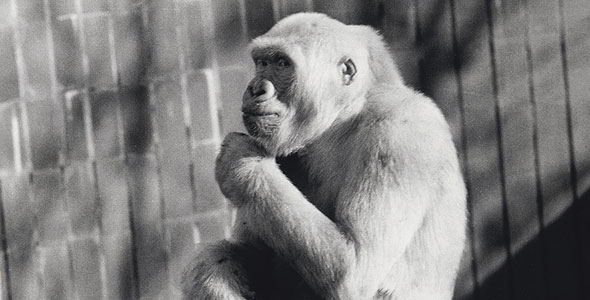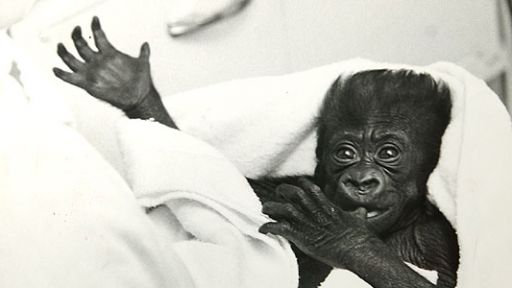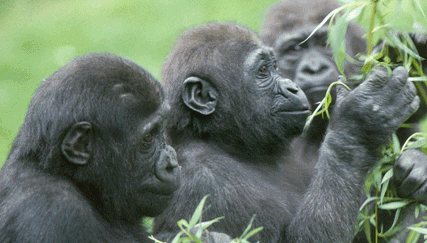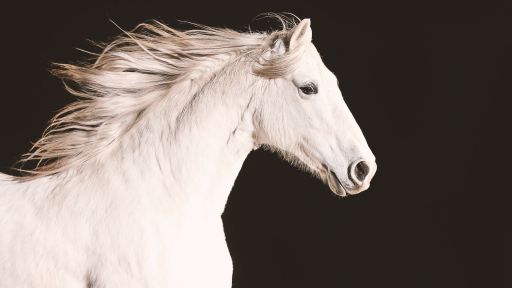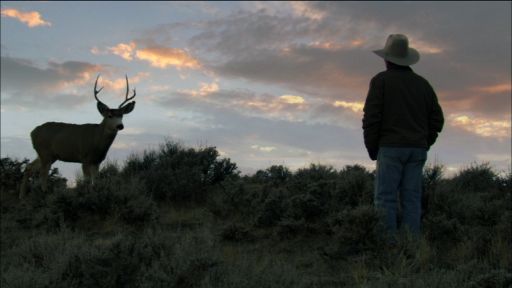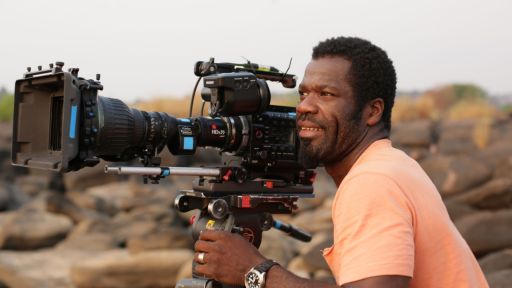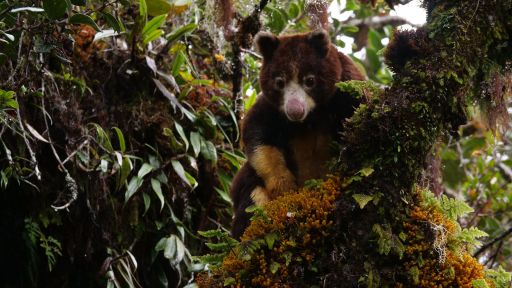The fall of 2003 brought sad days to the zoo in Barcelona, Spain. After nearly 40 years, Snowflake the white gorilla — who was the zoo’s most famous resident — was nearing death. Crowds gathered to pay a last, respectful visit to the elderly, ivory-maned gorilla, an emblem of one of Spain’s proudest cities. His wrinkled face and knowing eyes stared out from posters and postcards on every corner.
Snowflake’s keepers could barely conceal their pain. “Snowflake has lost his desire to play around with the rest of the family,” said one, sighing; “he prefers to sit alone, out of sight.” The keeper mentioned that caretakers were giving the gorilla painkillers.
The end came on November 24, 2003, when Snowflake died from cancer. “Until the end Snowflake enjoyed a fantastic quality of life, interacting normally with his children and grandchildren,” said the zoo’s chief, Jesus Fernandez.
But while Snowflake may be gone, his legacy remains. In his time at the zoo, he fathered 21 gorillas, who have in turn given birth to 10 grandchildren, says Carme Mate, a primatologist in Barcelona who observed Snowflake for years. “The mothers were 3 females born in Equatorial Guinea, like Snowflake,” she says. “Their names were Ndengue, Bimbili, and Yuma. Ndengue was always his favorite, and Snowflake showed much distress after her death” a few years before his own.
Four of Snowflake’s children are still alive, Mate says. Three females, Kena, Machinda, and Virunga, live at the Barcelona Zoo. One male, Bindung, resides at the Fukuoka Zoological Garden in Japan. Nine grandchildren also survive, five of whom are still at the Barcelona Zoo. “Snowflake’s last grandchildren were born in August 2004,” says Mate. “Two are twins, male and female. This is a remarkable event, since the birth of twins is quite unusual in gorillas.”
None of Snowflake’s offspring, however, is albino (several of the grandchildren have had light patches on their hands or feet at birth, but they disappear with age). That’s because Snowflake’s albinism was the very rare product of a genetic coincidence: both his mother and his father had to carry a specific gene. Albino gorillas are rare for another reason: because the trait can make the animals more vulnerable to skin cancer (which ultimately killed Snowflake) and other health problems.
At the Barcelona Zoo, for instance, researchers who studied Snowflake learned that the gorilla had poor vision, due to a lack of pigment in his eyes. He often frowned in an attempt to protect his eyes from bright light. His vision problems appeared to reduce his coordination and confidence. In the wild, such difficulties might have prevented Snowflake from ever reproducing — or perhaps from surviving at all.
Today, researchers are studying Snowflake’s family to see how the famous gorilla’s genes have been handed down through the generations. They are also using his memory to sustain efforts to protect gorillas in the wild — and improve their lives in zoos. A Snowflake research fund, each year hands out grants to scientists interested in improving our understanding of gorillas.
It’s essential work. All three kinds of African wild gorillas — the western lowland gorilla, the eastern lowland gorilla, and the mountain gorilla — are in trouble. Researchers estimate that fewer than 10,000 remain in the wild, of which 9,000 are western lowland gorillas. Deforestation and hunting are the greatest threats.
In Barcelona, Snowflake’s memory lingers. The gorilla was “an unforgettable companion for our city, and we all feel regret at losing him,” the city’s mayor said. “He’s made a great contribution to his species by making the plight of gorillas more known, and the best thing we can do for him now is to continue that work.”

